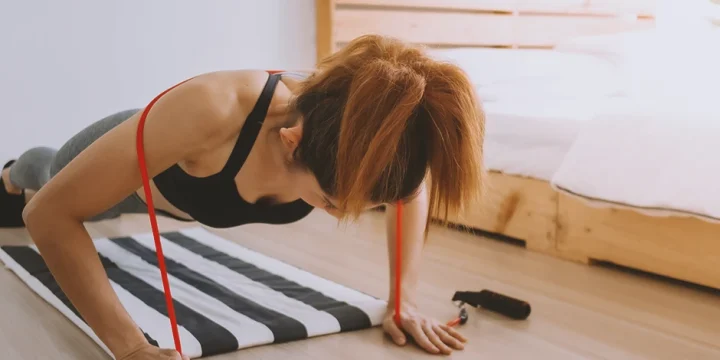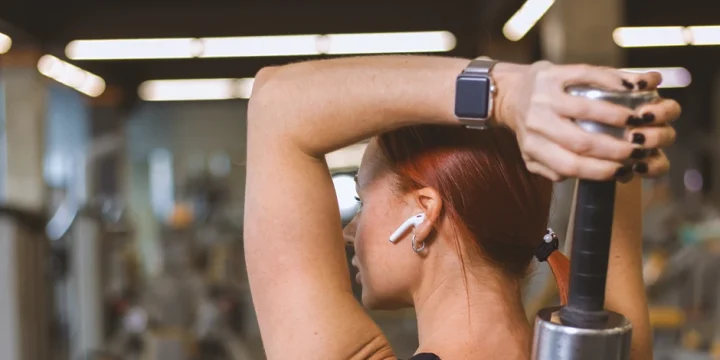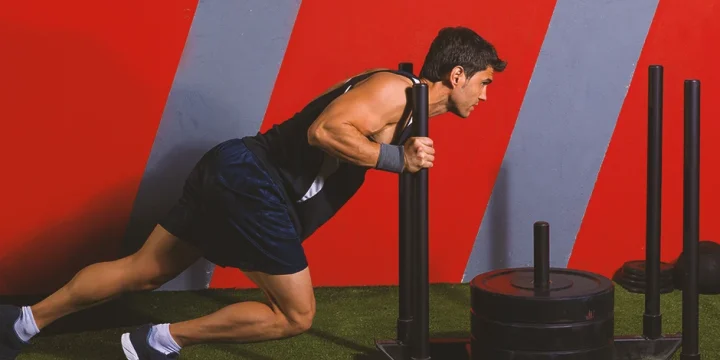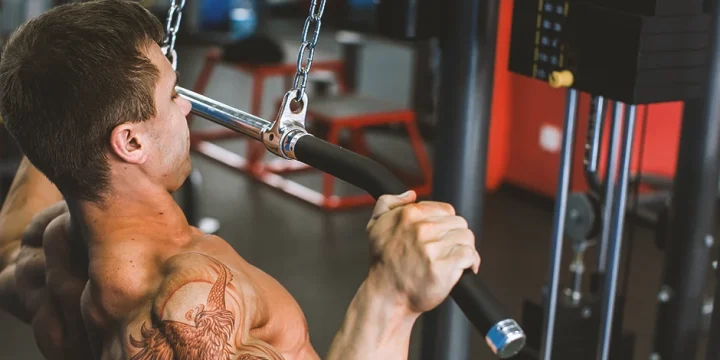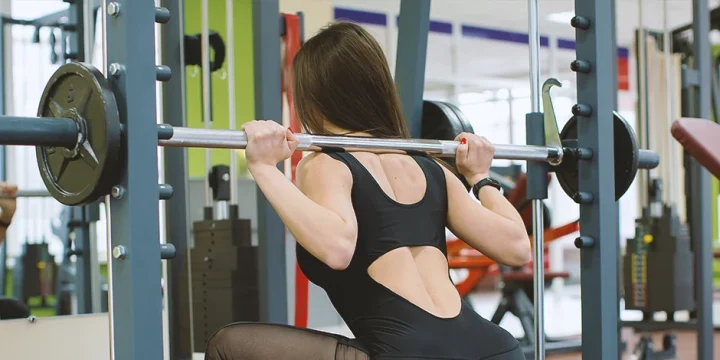Push-ups are suitable for all skill levels, targeting the chest, shoulders, core, and triceps without the need for equipment.
Recognizing that various push-up styles differ in difficulty, I conducted additional research on different variations and consulted with fellow experts on executing them effectively for enhanced strength.
In this article, I will present the best examples of push-up variations, offer form tips, and suggest ways to enhance your routine.
Quick Summary
- Some of the best push-up variations include Spiderman push-ups, one-arm push-ups, clapping push-ups, and plyometric push-ups.
- Push-up exercises are full-body workouts that primarily enhance upper body strength, with certain variations targeting specific muscle areas.
- Research from Harvard Medical School indicates that individuals who can do 40 push-ups in 30 seconds have a much lower risk of heart issues for the next 10 years than those who do less than 10.
- As a fitness trainer, I recommend clients adjust their push-up speed, body angle, and hand position to vary difficulty, targeting specific muscles as needed.
The Best Push-Up Variations

1. Traditional Push-Up
Traditional push-ups are a popular bodyweight exercise for boosting pressing strength and muscle growth.
Here's how to do it:
- Begin in a high plank position with your hands on the ground, wrists aligned under your shoulders. Engage your core muscles.
- Activate your lat muscles by tightening your quadriceps and glutes. Press your fingers into the floor, twisting your pinkies to the side.
- Inhale as you bend your elbows, lowering your chest toward the floor while maintaining tension throughout your body.
- Exhale as you push through your palms to return to the starting position.
- Repeat this sequence for the desired number of repetitions.
As a fitness trainer, I've noticed that traditional push-ups effectively boost pressing strength and muscle growth without the need for equipment, making them accessible for strength gains anywhere.
2. Archer Push-Up
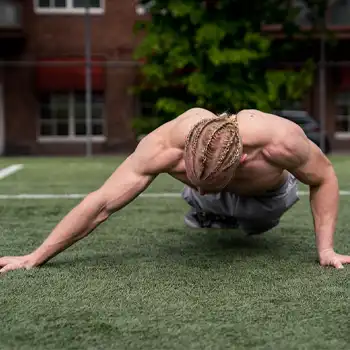
The archer push-ups apply a greater amount of body weight to one arm while the other one assists. This is an excellent technique to build up strength for the single-arm push-up.
Here's how to do it:
- Start in a wide push-up position with your hands at a 45-degree angle.
- Lower your body to one side, bringing your shoulder down to the same-side hand, while the other arm extends fully. Rotate your hands if needed.
- Push back up to the starting position and repeat on the opposite side.
3. One-arm Push-Up
The one-arm push-up is the most challenging variation on this list, intensifying the workload on a single arm. This exercise requires increased engagement from your side-ab muscles as the non-planted arm side works harder to maintain a straight line.
Here's how to do it:
- Start in a high plank position with hands slightly shoulder-width apart and feet positioned between hip and shoulder width.
- Engage your quadriceps, clench your glutes, and stabilize your body by pressing your toes into the ground.
- Shift your body weight to the working hand, release the non-working hand, and place it behind you on the lower back.
- Lower your chest to the ground with control by bending your elbow back.
- Squeeze your chest and triceps as you press through your planted arm to return to the starting position.
- Repeat for the desired number of reps.
4. Dive-Bomber Push-Ups
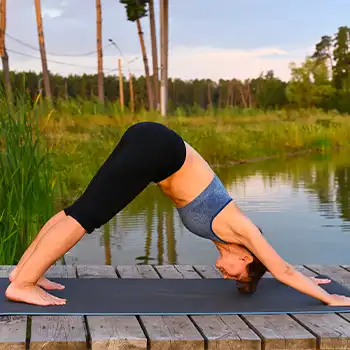
Dive-bomber push-ups, similar to yoga push-ups in appearance, require bending the arms to return to the starting position, reversing the motion by pushing the head back past both hands and elbows.
Here's how to do it:
- Begin with hands and legs shoulder-width apart, hips elevated in an inverted V shape.
- Bring the chest forward between both hands as you bend your arms, ensuring your shoulders stay away from your ears.
- Glide through, stretching your arms and raising your chest, with your hips slightly above the floor.
- To complete the push-up, reverse the glide and raise your hips.
5. Spiderman Push-Up
The Spiderman push-up is a more complex workout since it involves both upper body and core power to link many actions into one smooth movement.
Here's how to do it:
- Assume the standard push-up position.
- Bend your left knee and drag it toward your left forearm as you drop your torso, holding briefly until your chest hangs near the floor.
- Return the leg to the starting posture as you press yourself back up.
- Maintain a firm core and avoid abruptly moving your hips to one side.
- Repeat using your right leg.
6. Clapping Push-Up
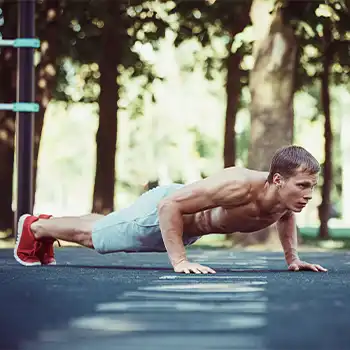
The clapping push-up, also known as the jumping push-up, adds a dynamic element to the traditional push-up.
Here's how to do it:
- Start in a push-up high plank stance.
- Lower your body, maintaining tension.
- Push off the ground forcefully, causing your hands to lift.
- Clap beneath your chest and return your hands under your shoulders.
- Adjust hand posture, engage midline muscles, and repeat for a comprehensive workout.
7. Pike Push-Up
Pike push-ups are a variation to the standard push-ups that strengthen the core and upper body, emphasizing the shoulders.
Here's how to do it:
- Start in a dog yoga pose, with your hands and feet wider than shoulder width.
- Maintain an inverted-V posture as you bend the elbows and lower the head between your hands, keeping your hips high and heels low.
- Reverse the motion to the initial position.
- Repeat for the desired number of reps.
8. Decline Push-Up
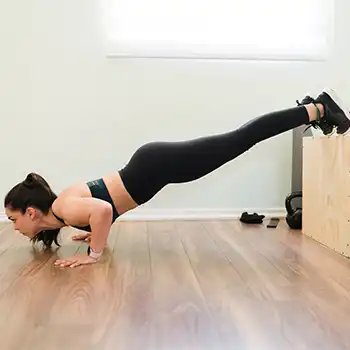
In contrast to incline push-ups, which are simpler than regular push-ups, decline push-ups are a far more difficult exercise that works more muscle groups.
Here's how to do it:
- Start on all fours, hands shoulder-width apart, facing away from the support for your feet.
- Extend both legs to reach a plank position, raising your feet and engaging the midline.
- Lower your body until your arms form a 90-degree angle, keeping elbows close to ribs.
- Push through the hands to return to the starting position.
- Repeat for the desired reps.
9. Plyometric Push-Up
Plyo push-ups involve a controlled descent followed by an explosive upward motion, incorporating hops or claps.
Here's how to do it:
- Start in a high plank or at the peak of a push-up with your core engaged and palms beneath your shoulders.
- Lower your body as in a push-up until your chest nearly touches the floor.
- Push up with enough force to lift your hands off the ground; optionally, add a clap for increased difficulty.
- Land softly and move into the next repetition.
- Repeat for the desired number of reps.
You may also like: How To Do Plyo Jacks
10. Wall Push-Up

The wall push-ups are a great push-up variation to progress to following the standard push-up since it most nearly replicates the same body posture.
Here's how to do it:
- Place your feet hip-width apart at an arm's length away from a strong wall.
- Place both hands on the wall, wrists aligned with shoulders and fingers pointing up.
- Consider screwing your pinkie and ring fingers into the wall to engage your lats.
- Squeeze your core, glutes, and quads to activate your entire body.
- Inhale as you straighten your elbows and drop your head toward the wall.
- Exhale as you push yourself to the starting position.
- Repeat for the desired number of reps.
As a fitness trainer, I've found this exercise targets the same muscles as a regular push-up but excels in refining form. It's a staple in our routine, enhancing both strength and movement precision.
Muscles Worked by the Push-Up

Most push-up approaches primarily train the chest, with shoulders and triceps providing support, while the abdomen and lower back engage to maintain a strong core.
On the other hand, specific modifications can strengthen the upper chest, emphasize core stability, or improve upper back and shoulder mobility.
Pectorals
Research from the National Institute of Health indicates that the push-up emphasizes your chest muscle groups. When you push the body away from the ground, your pecs are mostly responsible for arm adduction (moving your arms closer to your midline) [1].
"The push-up also engages lower-body muscles such as the hamstrings, glutes, and quadriceps."
- Jake Harcoff, Strength & Conditioning Coach
Triceps
When the elbows break 90 degrees as you push upwards, the triceps muscles take over to extend the elbows and lock out your arms.
Any push-up performed with a reasonably close grip (hands closer than shoulder-width) can boost triceps activation, as per the National Institute of Health [2].
Core
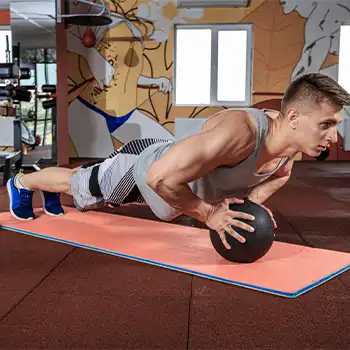
The posterior and anterior core muscles — your lower back and abs — maintain your body rigid, allowing your chest and triceps to exert maximum force, according to the National Institute of Health [3].
Single-arm movements like the slider push-up and single-leg actions like the Spiderman push-up require increased core engagement to offset a reduced support base.
Anterior Deltoids
The shoulder muscle comprises three distinct heads, each responsible for moving the arm in different directions relative to the torso.
The anterior deltoid, situated on the front of the shoulder, elevates the upper arm in front of the body. Research from the National Institute of Health suggests lifting your body off the ground benefits your chest and triceps [4].
As a fitness trainer, keeping your back straight during a push-up is important. If you don't, it can hurt your joints and make the exercise less healthy and effective.
Push-Up Form Tips

A common challenge in push-up technique is a lack of core stability, leading to improper form that stresses the lower back and raises the risk of injury.
To enhance your push-up performance, prioritize engaging your abdominal and glutes, and pause if you feel your spinal balance is compromised.
While it's acceptable to place your hands wider than shoulder-width apart, especially during basic push-ups, aim to keep your elbows at a roughly 45-degree angle from your body for most variations. This minimizes strain on the shoulders and places more emphasis on the chest and triceps.
As a fitness trainer, I often see clients dropping their heads in push-ups, risking neck strain and reduced muscle engagement. I consistently advise tucking their chins, creating a "double chin," and keeping a focused gaze on the floor—a simple tweak that significantly improves form and muscle activation during push-ups.
Leveling up Your Push-Ups

To level up your push-up game, understand the exercise's normal form limitations.
The standard workout effectively targets chest, shoulders, and arms, but you can enhance it. Increase triceps emphasis by adjusting hand placement and slow down the descent or stay at the bottom to maximize muscle-building potential.
As a fitness trainer, I encourage you to try out variations such as lifting your hands or feet during push-ups. These variations not only add a different emphasis but also expand your exercise routine without requiring new equipment or concepts.
"The most difficult aspect of push-up training is figuring out how to raise the load. The disadvantage of the conventional push-up is that it no longer challenges you after a few reps. You're constantly merely lifting a fraction of your body weight."
- Ebenezer Samuel, Certified Strength & Conditioning Specialist
Related articles:
FAQs
What Is the Best Push-Up Variation?
The best push-up variation is the wide-grip push-up. They are an excellent approach to strengthening your chest muscles. The exercise is done in the same manner as a typical push-up but with both hands wider apart. This makes your chest muscles work more than they would if you were doing normal push-ups.
Which Push-up Works the Most Muscles?
The push-up that works the most muscles is the foot-elevated push-up. You perform regular push-ups with the feet raised on a sturdy platform, such as a box or bench. The higher the platform, the more your chest, shoulders, core, and scapular stabilizers will be worked.
What Is the Most Difficult Push-up?
The most difficult push-up is the single-leg push-up. They are excellent for increasing balance and core strength.
References:
- https://www.ncbi.nlm.nih.gov/pmc/articles/PMC3625793/
- https://www.ncbi.nlm.nih.gov/pmc/articles/PMC4792988/
- https://www.ncbi.nlm.nih.gov/pmc/articles/PMC4126284/
- https://www.ncbi.nlm.nih.gov/books/NBK554420/
About The Author
You May Also Like
